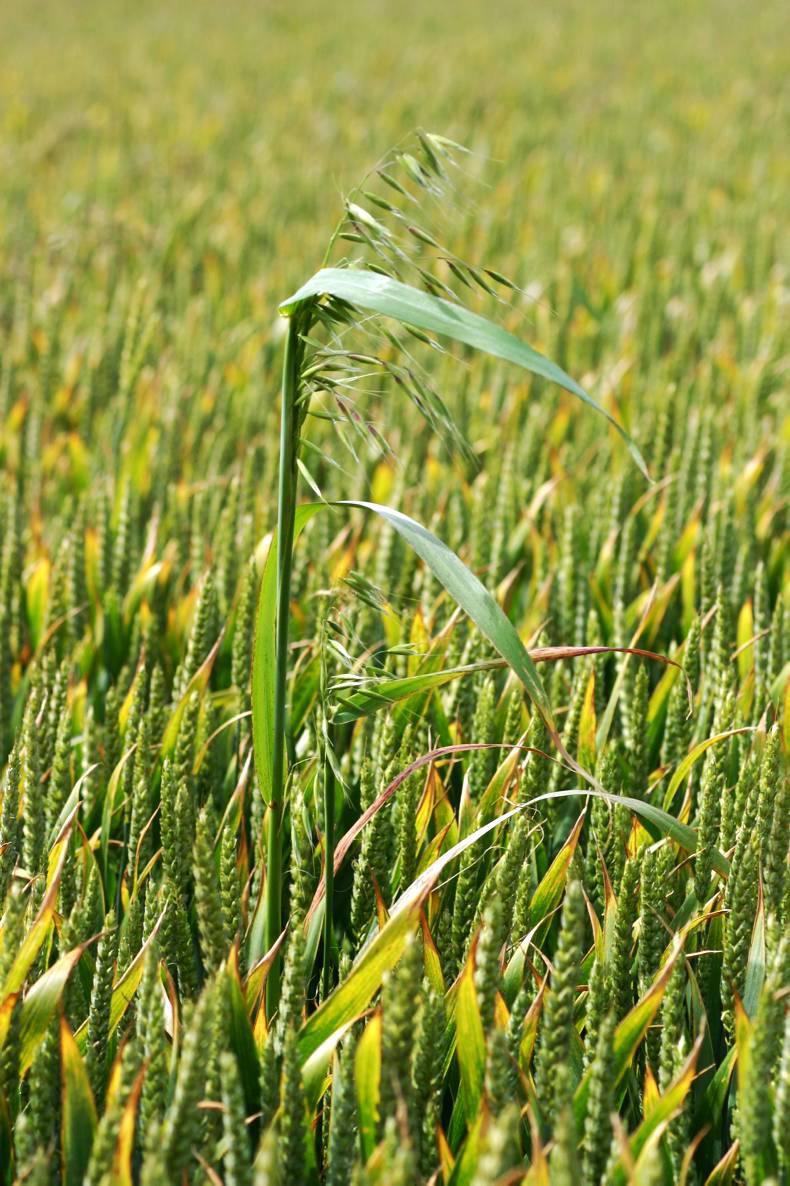This will be remembered as a bad year for grass weeds in tillage and a difficult year to secure good control by herbicides. The cold spring may have had a part to play, as the majority of our grassweed herbicides work best in actively growing plants. That is providing they can be hit with an adequate amount of spray.
Successful control of any weed is dependent on getting good spray coverage. This means that grass weeds with small fine leaves can be difficult to hit with adequate spray. And the bigger the crop canopy above these targets, the greater is the coverage challenge. These factors apply to all weeds but they are all the more critical when targeting troublesome grass weeds.
Grass weeds
Wild oats remains a major problem in this country and almost every tillage field now has a problem which needs to be treated or rogued on an annual basis. As with all other weeds, this will have started as one or two initial plants that were allowed to propagate.
Sterile brome is increasing in prominence also and is no longer confined to non-inversion tillage scenarios. This is a much less persistent weed than wild oats but it has been able to thrive where no specific action was taken to control it. We do have reasonable chemical control options for wheat but there are no useful options for barley. Sterile brome is not a very persistent weed and can be significantly reduced by good cultural husbandry.
Canary grasses, awned and lesser, have also increased in prominence in recent years and are very serious in some fields. Like the other grasses, it is expanding its footprint through the countryside and it can be found in an increasing number of fields. Its characteristic tight bushy head may look attractive but when plant numbers get high enough it becomes a potential disaster.
Blackgrass has also become more prominent in recent years. Many of these problems appear to have begun following the importation of seed in 2012 (a very bad Irish harvest). We know that there were infestation issues in a few fields back as far as the 1980s. But then, like now, the problems initiated from imported seed.
Back then, growers were very vigilant and rogueing was commonplace. Nowadays fields are seldom walked and a few initial plants can quickly propagate to produce huge infestation problems. And before growers realised they had a problem, it had spread, mainly by the combine, to other fields and even other farmers. The net result is that we now have an additional problem to address, whether for certified seed production or commercial cropping.
An additional concern with blackgrass is the huge level of herbicide resistance currently in existence in Britain. In extreme situations, this weed has developed resistance to all the major herbicides, except possibly for Avadex. So an old infestation, or a recent infestation that originated from a resistance-free region, is still likely to be susceptible to herbicides. But where a highly resistant population came in recently, future grain production, or even cropping, may prove impossible.
The control challenge
Identification of all of these grass weeds (see pictures) is important and there are other potential problems also such as scutch, annual meadow grass, onion couch, ryegrass, etc. While any of these can be serious problems, relying on herbicides alone to control them is not a sensible strategy.
There are two major reasons. There is too much evidence that these weeds can develop resistance to our current herbicides, plus an ongoing additional cost is a further erosion of margin. A third consideration is that chemicals alone show variable control and any surviving plants still need to be taken out to give a grower any chance of beating the weed long-term.
Cultural control, through stubble cultivation and good inversion, is a very useful add-on to chemical systems. Our damp climate brings many challenges and costs but a showery autumn helps to get weed seeds germinated in a cultivated stubble post-harvest. We do not use this enough and there are considerable advantages surrounding its use. The more seeds of any of these weeds that can be germinated in the autumn the quicker the seed bank and the problem can be reduced to a potentially rogueable level.
Weeds like sterile brome can be eradicated with the combination of spraying, stubble cultivation and rogueing or spot spraying with glyphosate. Eradication is a bigger challenge for the others but numbers can be reduced considerably to help our chemicals work better.
Non-inversion tillage can be a friend or a foe in these battles. Continuous min-till can result in a build-up of weeds where they are not being satisfactorily controlled. But where a problem exists burying it cleanly with the plough and not turning it up again for a few years can result in a significant decrease in subsequent weed numbers.
No matter which combination of control measures you choose to use, you can only begin to win the long-term battle when you physically remove any surviving plants or prevent further seed return in some way. Preventing seed return is key to winning these battles and it should be a core objective, especially on owned land.






 This is a subscriber-only article
This is a subscriber-only article















SHARING OPTIONS: